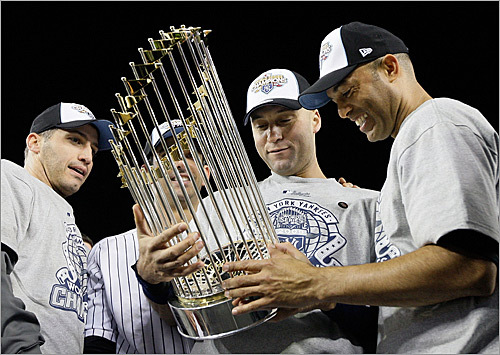By Anthony Breznican
https://ew.com/books/2018/09/24/cartel-3-don-winslow-border/
September 24, 2018

For years, fans knew it only as “Cartel Part 3” — but now author Don Winslow is ready to reveal the secrets of The Border, his latest thriller about the nexus of drugs, politicians, and global crimelords.
“I know this book is going to make some people angry,” he says. “I can live with that.”
The novel is out Feb. 26, and EW has the exclusive cover reveal — as well as an interview with Winslow about how he builds his fiction on a foundation of truth. The author of Savages and The Force is no stranger to provoking strong responses, sometimes getting death threats over his work.
The Border is a follow-up to his 2005 novel The Power of the Dog and 2015’s The Cartel, continuing the saga about international law enforcement, merciless drug traffickers, the press trying to cover the carnage, and the everyday people trapped in the crossfire.
It’s the culmination of decades of research and writing, but The Border also brings us to the present day — exploring real-life corruption in Washington D.C., the opioid epidemic sweeping the U.S., a new generation of brutal narcos, and how Wall Street and real estate moguls have helped launder untold amounts of blood money.
The full cover and interview are below:
ENTERTAINMENT WEEKLY: I know a great deal of your fiction is based on fact. What are some of the real-life incidents that inspired the new book?
DON WINSLOW: One of the things I try to do in The Border is to show, using the techniques of fiction, how Mexico fell even deeper into chaos not just following the extradition of Chap Guzman, but because of it. I use [fictional Sinaloa cartel kingpin] Adán Barrera’s death at the end of The Cartel to show that the power vacuum created in his absence spurs competitors and wannabes to try to fill the empty throne.
This is closely based on reality – in which Guzman’s family fell into conflict with each other, other elements inside the heretofore dominant Sinaloa cartel, and with other cartels who saw blood in the water and rushed in to attack. As a result, we swapped one wolf for a dozen coyotes.
I also have Art Keller [a DEA agent at the center of “Cartel” series] confront a culture of corruption within the United States – dirty money used to finance real estate deals that could compromise the government at the highest level.
Enough said.
You’ve written about the drug crisis as a journalist as well as a novelist. In 2016, you wrote an essay for Esquire that said marijuana legalization unintentionally created the opioid crisis, since the cartels needed a new illicit product to sell. Is that something you explore further in the new novel?
Absolutely — there’s a scene early in the book that flashed back to Adán Barrera taking his confederates out to marijuana fields and explaining that they’re losing money and need to go back to planting poppies for opium.
He says that the American pharmaceutical companies have created a market for opioids that the Sinaloa cartel can undercut with a cheaper and better product. And this is what happened.
I know you have lost people you care about to the opioid crisis. How did that personal loss influence this book?
Deeply. I don’t know that a day goes by that I don’t think about these people, and I created a character in The Border, a young woman heroin addict, to try to take the reader behind the headlines to show a real human being — what an addict thinks, how she feels, what she goes through on a daily basis, how the addiction evolves.
It’s one thing to talk about the heroin epidemic as an abstract phenomenon, another to use the freedom that fiction gives to make it real and immediate, personal. That’s the great beauty of fiction, we can get inside the characters’ heads and hearts and hopefully let the reader feel a little of what they feel. I hope I did that well, I tried.
I owe that to the people who shared their lives with me and didn’t make it.
Is there ever any wish fulfillment in the fiction, a desire to deliver justice to those who often elude it in real life. Or is that an impulse you have to resist?
Oh, there’s great wish fulfillment, but that’s a downside of fiction, isn’t it? The wish fulfillment isn’t real. But it’s not my job to deliver justice or even judgment.
My job is to bring the reader into a world that he or she otherwise couldn’t enter, so I have to keep it real. I can’t even fictionally deliver justice when there’s little or no chance that such justice could ever be rendered. I have to resist that impulse.
At the same time, it’s unrealistic to be continually pessimistic, so there are instances when I can choose for people to get their just desserts, as it were. For example, I’d have to admit that there was great satisfaction in killing Adán Barrera at the end of the last book. It felt really good.
How does it change things to dramatize these topics in fiction, as opposed to telling the facts through straight journalism? Is there something about the thriller narrative that makes it more compelling or accessible to readers?
Well, I think that it can be both. Some people who will not read journalism will read fiction, and vice versa. I find the best journalism to be compelling and accessible, but I think that fiction has certain freedoms that journalism doesn’t — or at least shouldn’t — take.
Basically, as novelists we’re allowed to make things up, to arrange events in a dramatic structure that real life doesn’t often have. We’re allowed to create dialogue and don’t have to rely on quotable quotes.
Most importantly, we can go into the inner lives of our characters — their thoughts and emotions, the “inner dialogue” that reveals so much. I was trained as a journalist and a historian, so I often have to remind myself that I’m writing a novel and not history, that I can rearrange chronology, be selective in what events I depict, and be creative with characters.
You’ve devoted decades of your life to this trilogy and writing about the issue of the war on drugs in general. Do law enforcement and political leaders seek your expertise?
You know, I’ve actually spent a third of my life writing this trilogy. Which amazes me. Not many political leaders (assuming facts not in evidence) have contacted me, but I hear from cops all the time.
I’m humbled that my novels are used as textbooks in some departments and agencies, and I get calls from police departments to discuss drug policies, or sometimes they’re seeking insight into which DTO’s (Drug Trafficking Organizations) they might be seeing in their towns.
You’d be surprised, by the way, how many cops are for drug legalization.
Do they provide any insights in return that are helpful for your writing?
The communication is absolutely two-way. I have police sources who provide me with information and insights and have been extraordinarily generous in that regard. I could not have written these books without the cooperation of police officers all over the world.
As you mentioned, the main antagonist of the series met his end in The Cartel. How is the legacy of drug kingpin Adán Barrera still alive and well?
Adán is the noxious gift that keeps on giving — his legacy lives in the heroin epidemic, and the protagonist, Art Keller, is keenly and painfully aware that he might have rid the world of Barrera, only to have something worse take his place.
Adán becomes a narco-saint, replete with shrines and devotees and banners that read ‘Adán viva’. So his spirit is very much alive throughout the book — most of the characters are constantly reacting to his legacy, they’re trying to be the next him.
Let’s talk about Art Keller, now no longer a lone wolf field operative but a leader within the DEA. He has always been a hardened, damaged character who has lost and sacrificed a lot to do what he thinks is right. How comfortable is he in his new role?
Not at all. Keller is not a political animal, and this is a major factor in the book. Keller comes from a career spent entirely in the field, mostly on his own, taking action, and now he finds himself having to run a vast bureaucracy, dealing with politicians — senators and congressmen as well as a very hostile president.
He also has to deal with the media and the Internet world, all foreign to him. But he took the job to combat the heroin epidemic, and we frankly downplay his administrative duties to laser-focus on stopping the flow of heroin. The path he takes — basically “follow the money” — takes him deeper into conflict with the powers-that-be in Washington.
Since you’ve embedded him in the upper echelon of the DEA, does the book touch on the current political climate that has brought so much upheaval to the intelligence and law enforcement communities?
The current political climate is the heart of the book, it’s one of the big reasons that I wanted to write the book, to show how a corrupt and venal political climate is directly related to the heroin epidemic, mass incarceration, the disgrace of our immigration policies.
They’re all of a piece, as Keller discovers when he starts to unwind that tangled ball of yarn. He becomes, as they say, “embattled”, by Congress, certain elements of the media, Wall Street, his own attorney general, and especially by a president desperate to stop his investigation and who will use any means to destroy him.
There’s always a vast number of supporting characters in your books, so can you preview one or two in this one who are especially fascinating?
Well, there’s a kid, Nico, who is forced to flee his slum in Guatemala to try to make it into the United States to save his life. The obstacles that he faces are, sadly, drawn from real life, and he faces a horrific struggle just to get to the border.
I wrote the book before the current crisis involving Central American children being ripped from their parents, but the Nico chapters are very relevant. I really grew to love that character.
There’s another one, Ric, who is actually Adán Barrera’s godson. A party-going playboy, one of the Hijos — the sons of the cartel bosses who grew up rich and entitled, Ric has to decide between loyalty to his childhood friends or fealty to his father, Adán’s chosen successor, who is facing a rebellion. Again, it’s drawn from the actual story. I think that readers will be fascinated to see the lives of the new generation of drug traffickers.
I also brought back a couple of old character we haven’t seen since The Power of the Dog, but I think I’ll let the reader discover who they are and what roles they come to play in the current story.
Lastly, the title of the book — The Border — is a politically loaded phrase. And the cover shows a wall topped with razor wire. Why did you choose that for the name?
I chose that title because that’s what the story is about. Drug trafficking is about the border, immigration is about the border, the political conflict is about the border.
That’s the physical border, an external border, but the book is also about how every character confronts moral and emotional borders inside themselves, whether they choose to cross them or not, and, if they do, whether they can make it back.
Are you concerned about anyone misinterpreting your intention?
I understand that it’s a politically loaded phrase. But loaded phrases, like loaded guns, are more interesting, aren’t they? They certainly contain more threat. I never worry about anyone misinterpreting my intentions. My intentions in this book are pretty clear, but I think that each reader has a perfect right to his or her interpretation.
I know this book is going to make some people angry. I can live with that.






